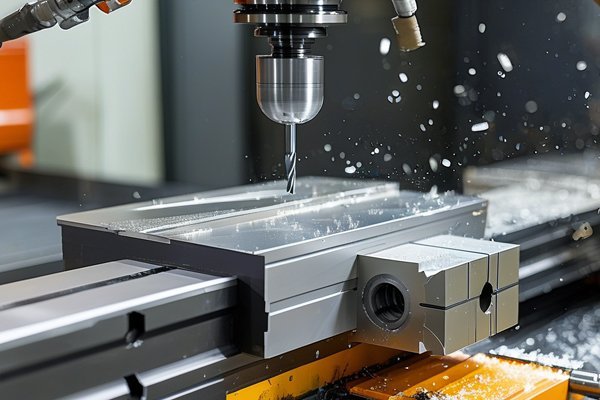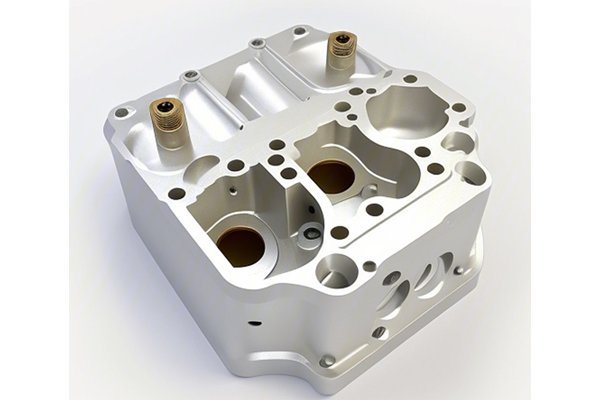Did you know that tool wear is one of the most significant contributors to production downtime in CNC machining? In fact, studies indicate that excessive tool wear can account for up to 30% of machining costs. With financial impacts of this magnitude, manufacturers constantly seek effective methods to enhance tool life and minimize wear during CNC machining processes. This blog will delve deeply into CNC milling prototype processing, focusing on practical, detailed strategies designed to reduce excessive tool wear, improve efficiency, and ultimately maximize production value.
Understanding CNC Milling and Tool Wear
Before we dive into technical solutions, let’s take a moment to clarify what CNC milling entails. CNC (Computer Numerical Control) milling is a subtractive manufacturing technique where a rotating cutter is used to remove material from a workpiece. This process is governed by a computer program that dictates the movements of the tool.
What is Tool Wear?
Tool wear is the gradual deterioration of cutting tools due to repeated friction and material removal. During CNC milling, tools experience wear from various factors, including:
The Importance of Tool Life
Maximizing tool life is not merely about reducing costs or production downtime; it also extends the precision and quality of the machined parts. Tools that wear out too quickly can compromise the tolerances of the final product, resulting in unnecessary waste and additional rework.
Detailed Solutions to Minimize Tool Wear
Below are detailed techniques that can be utilized to reduce excessive wear on tools during CNC milling.
The choice of tool material plays an integral role in determining the performance of CNC milling operations. Common materials used for cutting tools include:
Solution: Choose an appropriate tool material based on the characteristics of the workpiece material and the desired cutting speed. Research suggests that carbide tools often offer the best performance for aluminum and steel milling operations due to their superior hardness and wear resistance.
The design and geometry of the tool can significantly influence wear rates. Some important geometric factors include:
Solution: Use simulation software to analyze the cutting dynamics and optimize tool geometry before actual production. This can lead to significant reductions in wear and enhanced tool life.
Optimal cutting speeds, feed rates, and depth of cut can dramatically influence tool wear. It is essential to find a balance that enables efficient material removal while minimizing wear.
Solution: Perform a cost-benefit analysis for each setup. Implementing small, incremental changes can lead to better results, such as decreased wear and improved surface finish.
Applying specialized coatings to cutting tools can enhance their performance by reducing friction and providing thermal protection.

Solution: Utilize coated tools where appropriate for particular materials. This can increase tool life up to 2-3 times compared to non-coated tools.
Regular inspection and maintenance of tools are vital to achieving optimal performance.
Solution: Establish a routine inspection and maintenance schedule for tools to extend their lifespan.
Different materials react differently during machining, affecting tool wear rates. Harder materials will typically lead to increased wear rates.
Solution: Conduct comprehensive material analysis to choose appropriate tooling and parameters that will minimize wear and enhance productivity.
Proper cooling and lubrication are critical in preventing excess heat generation during machining, which directly affects tool wear.
Solution: Implement optimized cooling systems that not only protect tools but also enhance machining performance.
A properly calibrated machine ensures precision, which leads to less wear over time.
Solution: Invest in routine calibration checks to sustain machine accuracy, which plays a significant role in extending tool life.
Importance of Monitoring Tool Wear
Continuous monitoring of tool wear can provide actionable insights to improve efficiency and tool life. Various methods, such as visual inspections, direct measurement, and advanced sensor technology, can be employed to track wear.
Incorporating Technology
Incorporating advanced technology such as IoT (Internet of Things) and AI (Artificial Intelligence) can revolutionize how we approach tool wear management.
Solution: Adjust processes dynamically based on real-time data, allowing for quick response actions that prevent tool failure and enhance overall productivity.
In conclusion, avoiding excessive tool wear in CNC milling prototype processing is not a challenge that can be tackled with a single solution; it requires a uniform strategy encompassing various factors, including material selection, tool customization, cutting parameters, maintenance protocols, and technological integration. By employing these techniques, manufacturers not only reduce costs associated with tool replacement but also enhance operational efficiency, product quality, and ultimately profitability.
As we constantly innovate and refine our machining processes, it is crucial to understand that tool wear management is an ongoing commitment. Businesses that prioritize these strategies not only protect their investments but pave the way for future growth. Considering tool wear is fundamental for anyone looking to optimize CNC milling operations, and it holds significant implications for the manufacturing landscape as a whole.
Keep these principles in mind and strategically approach your CNC milling processes. The rewards will resonate throughout your production lines and significantly contribute to your bottom line. Crafting a reliable strategy to manage tool wear is not merely an operational necessity; it is a pathway to achieving manufacturing excellence.






